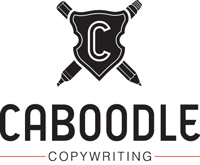Think of the world’s most innovative or disruptive businesses. Which companies spring to mind? Apple? Google? Uber? There are others, of course, but ask yourself this: of all the companies that are genuinely innovative or disruptive, how many use those words to describe themselves?
Disruption is the new innovation (in a bad way)
Clients often ask us to use the word ‘innovative’ in our copywriting and message design work. Trouble is, everyone says it, whether it’s strictly according-to-the-Oxford-English-Dictionary true or not.
‘Innovative’ and ‘innovation’ have become so overused and abused in marketing that they’re largely meaningless, and the same thing is happening to the words ‘disruptive’ and ‘disruption’. They’re everywhere and they’re fast becoming watered down and vague and blandified (yes, I just made that word up).
According to Harvard Business School professor Clayton M. Christensen (the man who coined the term ‘disruptive technology’), a disruptive innovation is an innovation that helps create a new market and value network, and eventually disrupts an existing market and value network (over a few years or decades), displacing an earlier technology.
What happens if you use ‘innovative’ or ‘disruptive’ in your marketing?
Best case, people will think you are what you claim to be, but they’ll want to see proof. And that begs the question, if you can show people you’re innovative, do you really need to tell them?
Worst case, they’ll roll their eyes and group you in the if-they-have-to-tell-me-they’re-innovative-or-disruptive-then-they-probably-aren’t category.
Don’t be THAT guy at the party
Apple doesn’t waste time and money telling you they’re innovative. They just are. They innovate. Other people tell you Apple are innovative. You believe they’re innovative.
Here’s another way of thinking about it. Say you go to a party. A guy (let’s call him Dave) comes up to you and tells you he’s really funny.
Okaaaay.
Then the host introduces you to another chap, saying, ‘This is Barry, the funny guy I told you about.’
Now, I don’t know about you, but I’m guessing Barry is probably funnier than Dave. In fact, Dave is going to have to work a whole lot harder than Barry to prove that he’s funny.
Stretching an already tenuous analogy even further
So, you’re still at the party.
You’ve met Dave (which was a bit weird) and you had a chat with Barry (who was actually pretty funny). Then you run into another fella (Tony) and you get chatting and, before you know it, he has you in stitches.
Next minute, you’re introducing Tony to one of your friends as, ‘a really funny guy.’
Enough of the party. What’s the point?
The moral to this rather convoluted tale is pretty simple really. Try to be like Tony (Uber), or Barry (Apple), but whatever you do, try not to be a Dave. (Not a sentence you get to write every day.)
It’s always better to show, rather than tell. And if you have to tell, be smart about it. There are lots of ways to show and tell people that you’re shaking up your industry or revolutionising your sector, without using the i-word or d-word. Want to know how? Contact us.
Paul Leonard is an award-winning copywriter and creative director. He has plied his creative craft in the UK and Australia for more years than he cares to mention, working with (and winning awards for) clients of all shapes and sizes across an equally diverse range of industries. When he’s not building brands and crafting copy, concepts and campaigns, he enjoys running, drinking iced coffee and writing profiles about himself in the third person.
